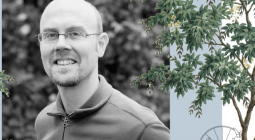She kills to be kind: the mastermind ecologist eliminating invasive predators

Honed in New Zealand and exported globally, Elizabeth Bell’s techniques for creating predator-free zones are allowing native species to thrive again on islands from the Caribbean to the UK
In the middle of the night, nine-year-old Elizabeth Bell sprints through the narrow bush tracks of Maud Island, racing toward the nearest ridgeline. The darkness beyond her is almost total. There is no ambient glow from distant city street lights: the island is a 1.2 sq mile (3.2 sq km) uninhabited speck covered with forest, off the northern tip of New Zealand’s South Island.
Somewhere out there in the 1am darkness, on tracks skirting the dense, latticed native forest, her siblings are running too, sprinting for the other headlands. They listen for the sound of distant booming, resonant and low, like the throb of a timpani drum or the buzz of a phone on a hard table.
The boom is the mating call of the kākāpō, one of New Zealand’s rarest birds. Its rarity is enough to send the entire Bell family scrambling from bed in the midnight hours. Scattered across the island’s high points, Bell and her siblings triangulate with their father, Brian, a conservationist and ranger on the island. Each turn on a radio transmitter and listen for the telltale beep signalling a nearby kākāpō tag, tracking the nesting zones.
“Some people would say it was a very unusual childhood,” Bell says now, decades later, as she steers a truck towards a nature reserve in New Zealand’s upper South Island. “But it was just what we did.”
This was the proving ground for Elizabeth “Biz” Bell: a place and a family that revolved around a fierce love of birds, and that helped turn her into one of the conservation world’s great mass killers.
Today, she is one of the primary architects of a series of ambitious conservation projects from the Caribbean to the Channel Islands. Honed in New Zealand and now exported to the world, they are called predator-free zones, and their primary tool is death: mass trapping or poisoning drives to eliminate introduced predators or pests.
In doing so, Bell and her colleagues hope to halt the cascade of extinctions exacerbated by the introduction of predatory or competing species, allowing native and endangered creatures, particularly birds, to return and thrive.
In a report released this week, the UN warned that invasive species are costing the world at least $423bn every year and have become a leading threat to the diversity of life on Earth.
From a small roadside office in the town of Blenheim, Bell heads Wildlife Management International. Its headquarters is nondescript, surrounded by a row of yards selling gravel and mechanical workshops. Inside, posters of birds and lizards line the walls. A pinboard is papered with photographs of Bell and her team cradling enormous albatrosses, grinning with seabirds, eyeball-to-eyeball with lizards.
On another wall, a world map is crisscrossed with lines, showing the team’s own migratory journeys to Barbados, Anguilla, the British Channel Islands, and islands off the coast of Ireland. So far, they have eradicated rats, mice, feral cats and rabbits from almost 30 islands around the world.
While conservationists have long experimented with culls to cut predator populations and preserve native species, elimination projects go a step further, seeking to wipe out introduced predatory species completely from a geographical area. New Zealand’s unusually sharp delineation between native and introduced species makes it a natural home for the idea.
The country’s islands split away from other land masses so early it has no indigenous land mammals. Its vast, diverse bird population evolved with few predators, and many adapted to fill mammalian niches: large, nocturnal, flightless. When humans arrived, bringing rats, stoats, possums and ferrets, Aotearoa’s birds were radically vulnerable. These predators, alongside human pressures and land conversions, heralded a new era of mass extinctions.
For a long time, Bell says, the idea of restoring pockets of the environment to their pre-introduced-predator state was seen as wishful thinking – an oddball, uncompromising, even utopian vision for preserving ecological worlds that had already slipped away. “Scientists of the day used to say, you know, New Zealand’s ecosystem will equilibrise with the rats, and we’d get a balance,” she says.
But New Zealanders were watching that experiment play out in real time – and often fail. Bell grew up on the story of Big South Cape, an uninhabited island off New Zealand’s southern coast. Wild, rocky-coasted and mammal-free, the island had become a haven for rare native birds. In the mid-1950s, however, rats reached the island, devastating the bird population within a few years. Conservationists, including Bell’s father, scrambled to save some remaining birds, transplanting them to other islands. But for a number of species endemic to the island, they were too late. It was “a lightbulb moment,” says Bell. “We lost those species in our lifetime … watched these species disappear.”
A possible solution came in 1964 when ecologists laid poison across Maria Island’s rocky bush to rein in a growing rat population. The scheme was far more effective than anticipated. They returned the next year to discover they had wiped out the local rat population in its entirety.
“It was like – well, if we can do it by accident, let’s see how we can do it on purpose,” Bell says.
New Zealand now has the world’s most radical approach to predator elimination. In 2016, the government announced “Predator-free 2050” – a national programme that aims to completely eliminate rats, stoats and possums across the country. So far, it has only succeeded on offshore islands and fenced sanctuaries, but it spurred a vast expansion of expertise in the catching and killing of furry creatures.
“New Zealand are the world experts, leading the charge in developing new technology, new tools, new methods,” Bell says. That expertise is now becoming a valuable international export. Visit any elimination project around the world, she says, and you’ll typically find a New Zealander involved somewhere: piloting a helicopter to drop poisoned bait or demonstrating new forms of humane rodent traps.
“They get the Kiwis in to kill everything,” Bell says, laughing, “and then do the fun stuff themselves.”
In 2002, Bell began overseeing her first handful of overseas projects, taking techniques developed in New Zealand and applying them to Lundy, an island off north Devon in the UK. At times, her projects have been controversial: not all countries have as clear a demarcation between introduced and native species as Bell’s home, and the decision of what deserves to live is harder to parse. On Lundy, the rat-eradication project was resisted by animal rights groups, who argued that conservationists were favouring tourist-friendly birds over the rats.
For Bell, the answer is clear: “We’re just talking about getting to have that balance back – of what species actually used to be there.”
Proof of a project’s success has generally coincided with the return of seabirds. Species that had been winnowed down to a few nesting pairs exploded back in numbers, and birds vanished from living memory began to return.
On St Agnes Island in the Isles of Scilly, only one islander recalled ever having seen a shearwater chick. “She was 89 or 90 when we were doing the eradication, and she could remember seeing a chick when she was very little,” Bell says.
“At 101, she got taken out to the colony and saw a chick leaving the burrow,” she recalls. “She was absolutely beside herself … watching these birds come and go from that island, and to have them come back.”
On Lundy, the total seabird population trebled after the last rat was caught in 2006. Puffins increased from 13 birds in 2001 to 375 in 2019, and the population of Manx shearwaters went from 297 pairs to 5,504. Today, Lundy has thousands of shearwater nests – they colonise clifftops and island tracks, their strange, rhythmic cries echoing out at night.
“I got asked at the time when I would say [the Lundy] project was a success … I said: when the tourists who stay at the lighthouse complain that the seabirds are keeping them awake.”
She and the team had hoped to return to the island for the 20th anniversary of eradication but were stranded by the Covid pandemic and spent the occasion chatting to conservation workers over the phone instead. On a visit to the pub, a worker for the Royal Society for the Protection of Birds said they had overheard tourists complaining about the noise: “The shearwaters are keeping them awake.”
Find more age of extinction coverage here, and follow biodiversity reporters Phoebe Weston and Patrick Greenfield on Twitter for all the latest news and features
Photograph: Jim Tannock/The Guardian - Elizabeth ‘Biz’ Bell, head of Wildlife Management International, which helps rid islands of invasive species and create predator-free zones.





